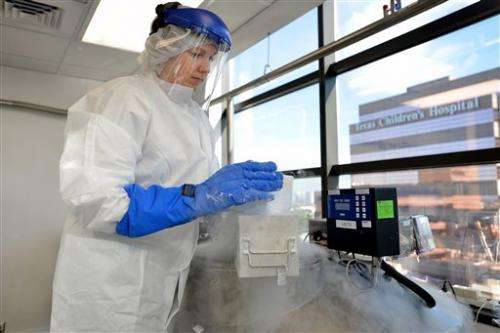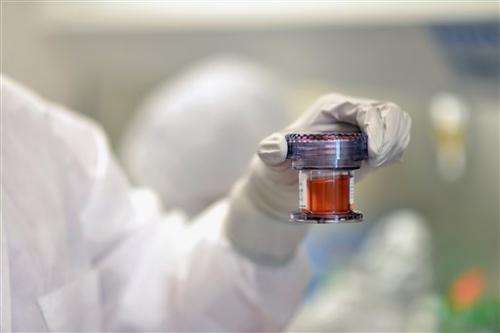Designer T cells fight viruses after transplants

Bone marrow transplants save thousands of lives but patients are vulnerable to severe viral infections in the months afterward, until their new immune system kicks in. Now scientists are developing protection for that risky period—injections of cells specially designed to fend off up to five different viruses at once.
"These viruses are a huge problem, and there's a huge need for these products," said Dr. Ann Leen, who leads a team at Baylor College of Medicine and Texas Children's Hospital that found an easier way to produce these long-desired designer T cells.
Healthy people have an army of T cells that roams the body, primed to recognize and fight viruses. People with suppressed immune systems—such as those undergoing a bone marrow transplant to treat leukemia or other diseases—lack that protection. It can take anywhere from four months to more than a year for marrow stem cells from a healthy donor to take root and start producing new immune cells for the recipient. When patients get sick before then, today's antiviral medications don't always work and cause lots of side effects.
The proposed solution: Take certain virus-fighting T cells from that same bone marrow donor, and freeze them to use if the recipient gets sick. Years of experiments show it can work. But turning the idea into an easy-to-use treatment has been difficult. A dose had to be customized to each donor-recipient pair and protected against only one or two viruses. And it took as long as three months to make.
Wednesday, Leen reported a novel technique to rapidly manufacture so-called virus-specific T cells that can target up to five of the viruses that cause the most trouble for transplant patients: Epstein-Barr virus, adenovirus, cytomegalovirus, BK virus, and human herpesvirus 6.

Essentially, Leen came up with a recipe to stimulate donated T cells in the laboratory so that they better recognize those particular viruses, and then grow large quantities of the cells. It took just 10 days to create and freeze the designer T cells.
To see if they worked, Leen's team treated 11 transplant recipients. Eight had active infections, most with multiple viruses. The cell therapy proved more than 90 percent effective, nearly eliminating all the viruses from the blood of all the patients, Leen reported in the journal Science Translational Medicine.
The other three patients weren't sick but were deemed at high risk. They were given early doses of the T cells protectively and remained infection-free, Leen said.
Next, her team is beginning a bigger step—to try creating a bank of those cells from a variety of healthy donors that any patient could use, without having to custom-brew each dose.
It would take large studies to prove such a system really works.
But Leen's technique makes production of these T cells practical instead of laborious, said Dr. John Barrett of the National Institutes Health, who wasn't involved with the new research.
"It's a step further to making this something that could be done not just in ivory towers," but one day by a drug company, said Barrett, a stem cell transplant specialist at NIH's National Heart, Lung and Blood Institute.
Different varieties of custom-made T cells have proved effective in a series of small studies, added Dr. Richard O'Reilly, pediatrics chief at Memorial Sloan Kettering Cancer Center and another pioneer of the approach.
"It's just very, very hard and very expensive to generate cells from each transplant donor against each virus," he said. "What this is showing is that you can make T cells against a series—and these are the most important viruses that we deal with—and you can make enough of these T cells to make a difference."
More information: "Activity of Broad-Spectrum T Cells as Treatment For AdV, EBV, CMV, BKV, and HHV6 Infections After HSCT," by A. Papadopoulou et al. stm.sciencemag.org/lookup/doi/ … scitranslmed.3008825
© 2014 The Associated Press. All rights reserved.


















